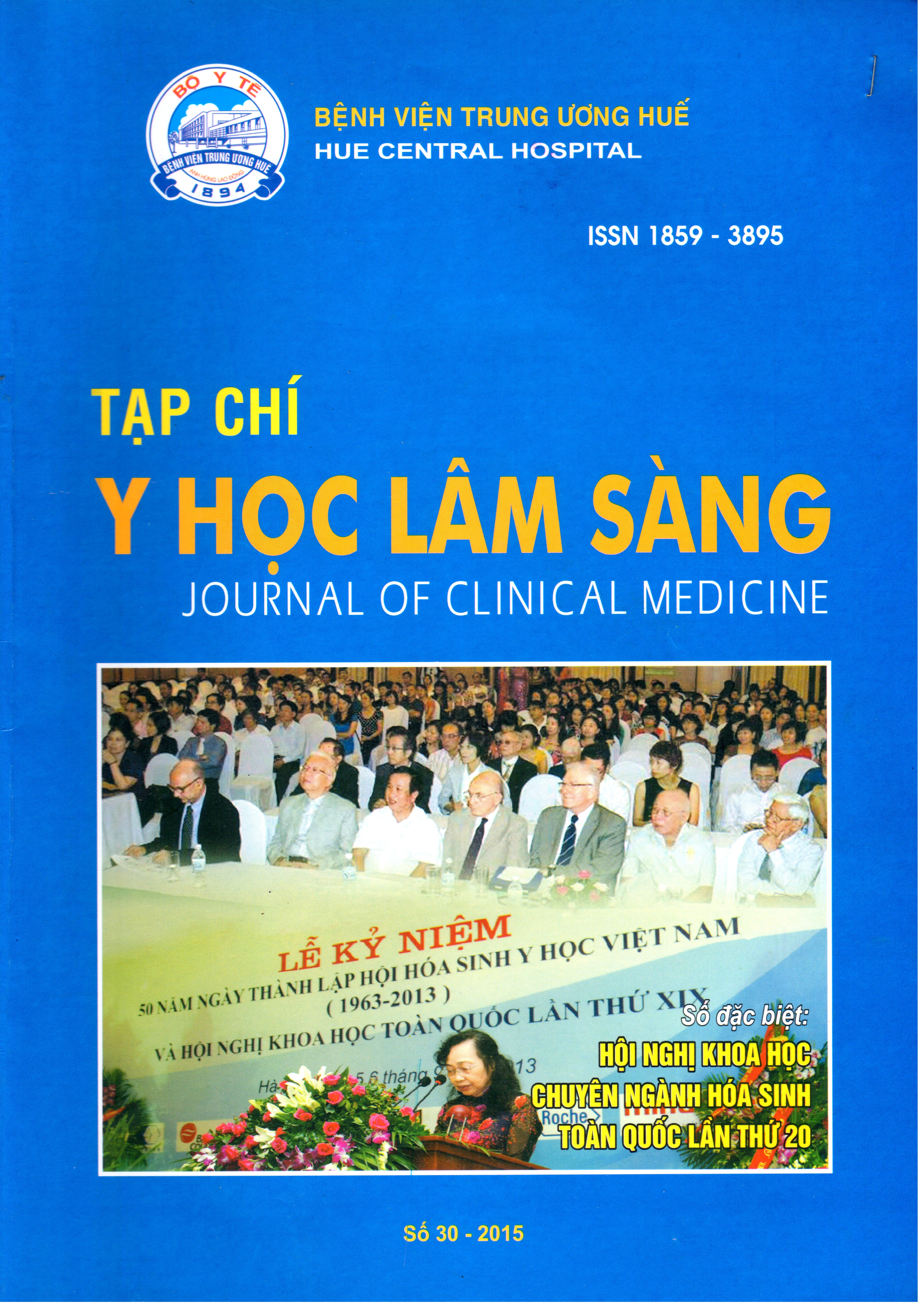Abstract
Diabetic ketoacidosis (DKA) remains a major problem of uncontrolled diabetes with high morbidity and morrtality rates.
Objective: To evaluate the values of plasma beta hydroxybutyric acid in uncontrolled diabetes.
Method: a cross-sectional study of 62 patients with uncontrolled diabetes with hyperglycermia (>13,9mmol/L).
Results: The plasma beta hydroxybutyric acid were 1.64±1.21 mmol/L, 67.7% patients showed hyperketonemia, 16.1% patients showed ketoacidosis. Using blood ketone as the reference method, the sensitivity of urinary ketone measurement was 33.3% and specificity was 80.7%, positive predictive value and negative predictive value of urinary ketone against blood ketone were 67.7% and 85.7%, respectively.
References
Alfadda Assim A, Afshan Masood, Shaffi Ahamed Shaik et al (2013), "Association between Osteocalcin, Metabolic Syndrome, and Cardiovascular Risk Factors: Role of Total and Undercarboxylated Osteocalcin in Patients with Type 2 Diabetes", International Journal of Endocrinology, 20: 13, Article ID 197519:
Chillarón Juan J, Juana A Flores-Le Roux, David Benaiges, Juan Pedro-Botet (2014), "Subclinical cardiovascular disease in type 2
diabetes mellitus: To screen or not to screen", World J Clin Cases, 2(9): 415-421.
Lee NK, Sowa H, Hinoi E, Ferron M, Ahn JD, Confavreux C, Dacquin R, Mee PJ, McKee MD, Jung DY, Zhang Z, Kim JK, Mauvais-Jarvis F, Ducy P, Karsenty G (2007), "Endocrine regulation of energy metabolism by the skeleton", Cell, 130(3): 456-69.
Misao Arimatsu, Takao Kitano, Naoko Kitano, Makoto Futatsuk (2009), "Correlation between bone mineral density and body composition in Japanese females aged 18-40 years with low forearm bone mineral density", Environ Health Prev Med, 14: 46-51.
Ravn P, Cizza G, Bjarnason NH, Thompson D, Daley M, Wasnich RD, McClung M, Hosking D, Yates AJ, Christiansen C (1999), "Low body
mass index is an important risk factor for low bone mass and increased bone loss in early post menopausal women", Journal of bone and mineral Research, 14(9): 1622-1627.
Scherer PE (2006), "Adipose tissue: From lipid storage compartment to endocrine organ", Diabetes, 55: 1537-1545.
Yeap Bu B, S A Paul Chubb, Leon Flicker et al (2010), "Reduced serum total osteocalcin is associated with metabolic syndrome in older men via waist circumference, hyperglycemia, and triglyceride levels", European Journal of Endocrinology, 163: 265-272.
Zimmet Paul, George Alberti, Jonathan Shaw (2005), "A new IDF worldwide definition of the metabolic syndrome: the rationale and the results", Diabetes Voice, 50(3): 31-33
| Published | 07-09-2015 | |
| Fulltext |
|
|
| Language |
|
|
| Issue | No. 30 (2015) | |
| Section | Original article | |
| DOI | ||
| Keywords | acid beta hydroxybutyric, đái tháo đường beta hydroxybutyric acid, diabetes |

This work is licensed under a Creative Commons Attribution-NonCommercial-NoDerivatives 4.0 International License.
Copyright (c) 2025 Journal of Clinical Medicine Hue Central Hospital

